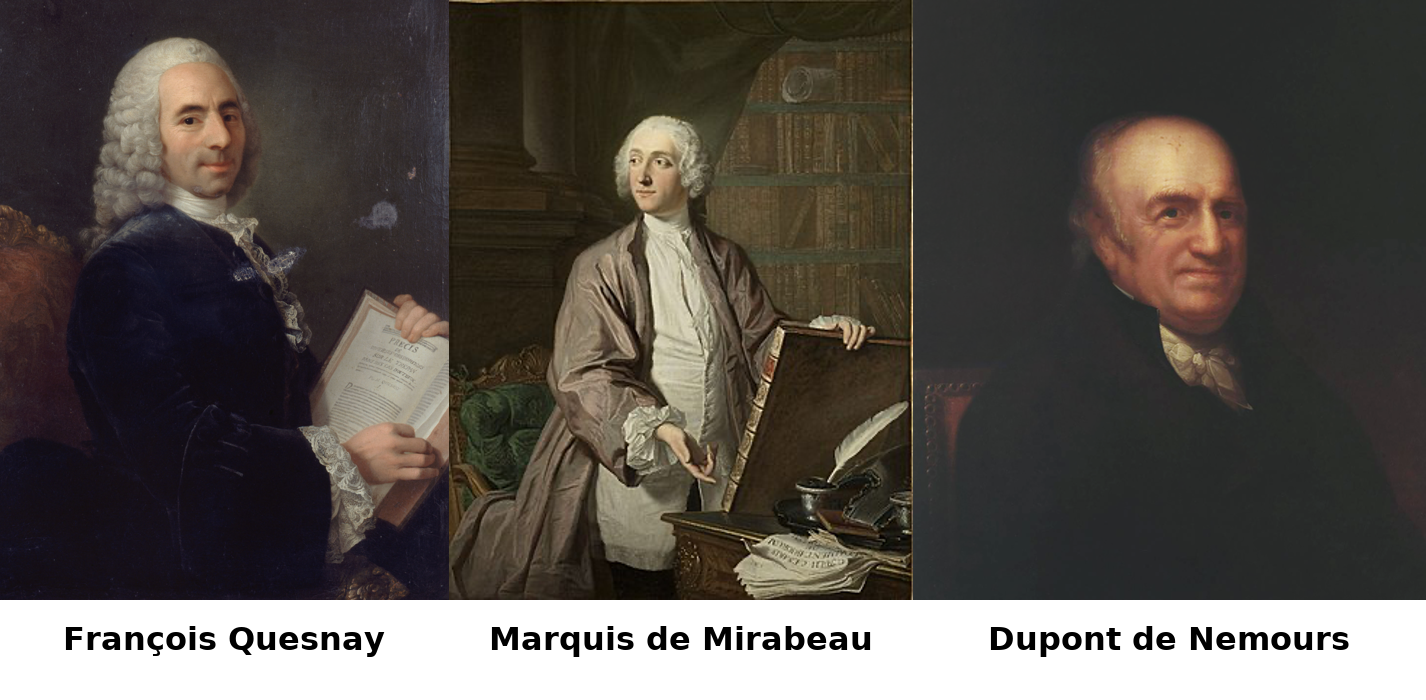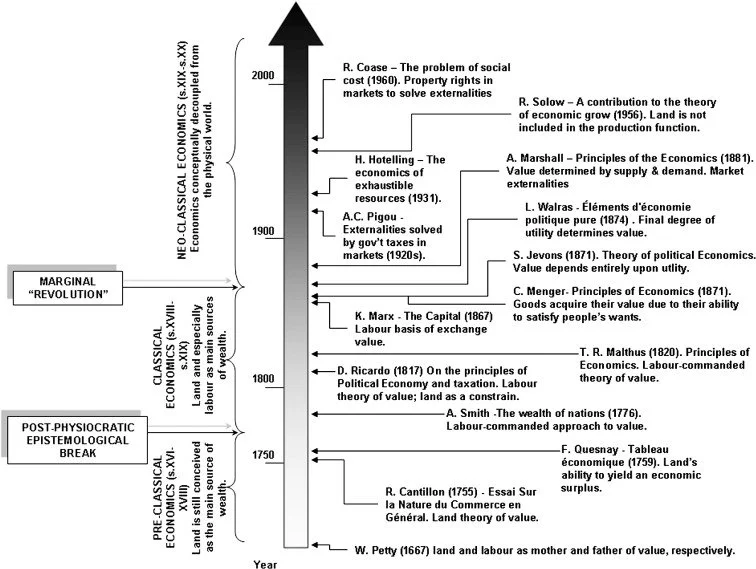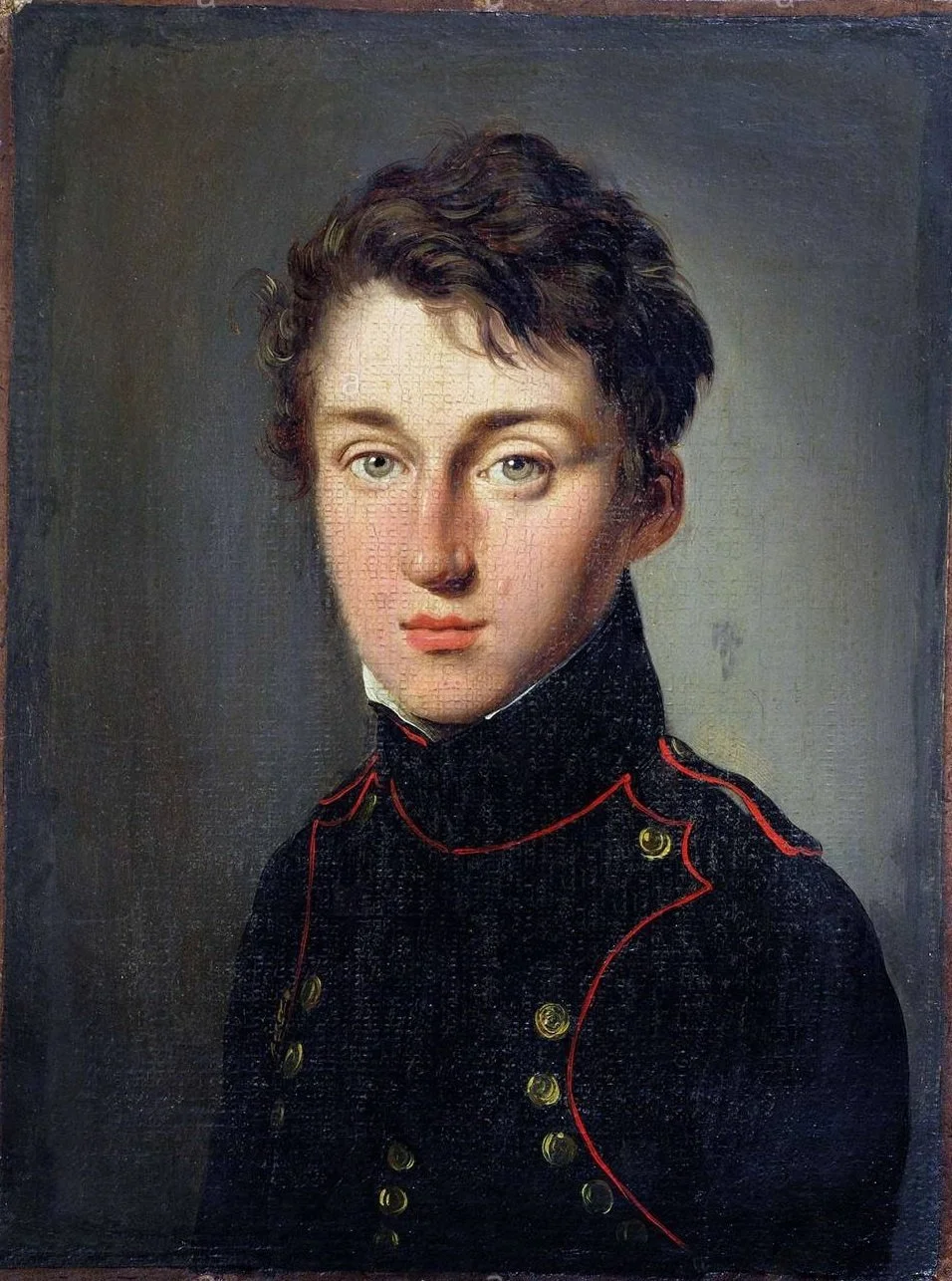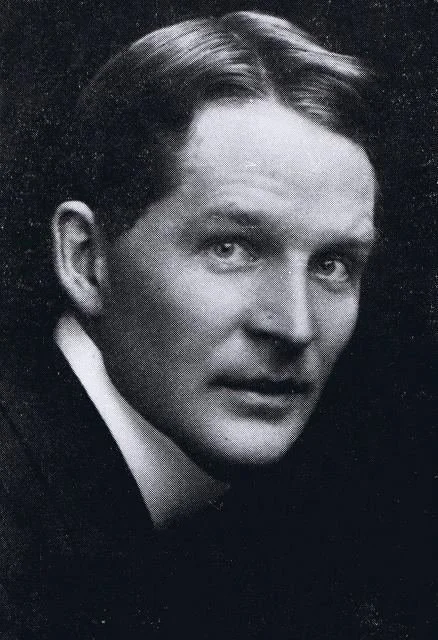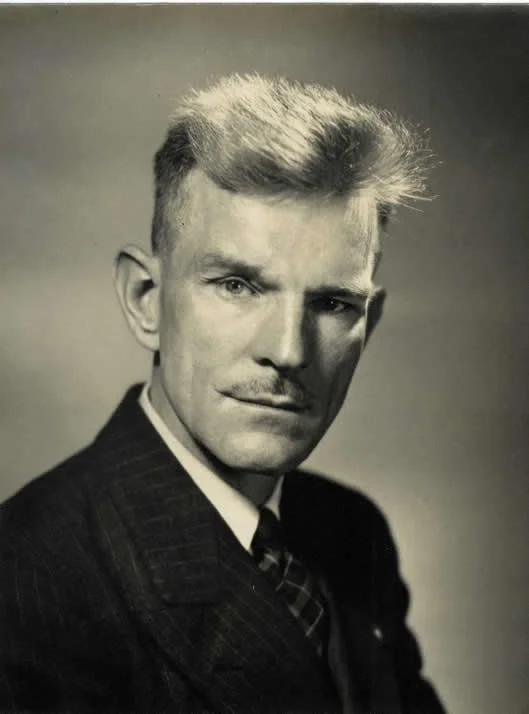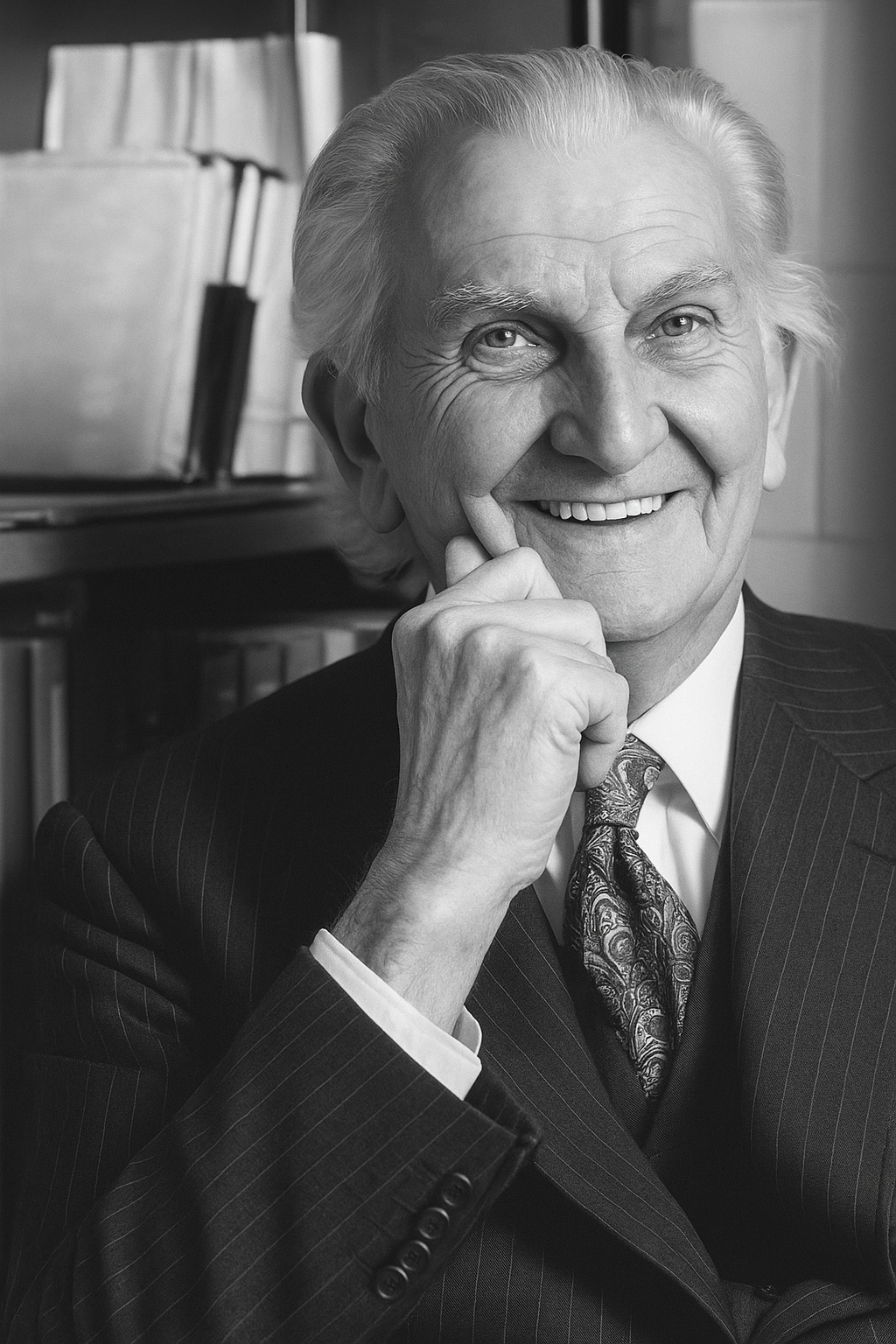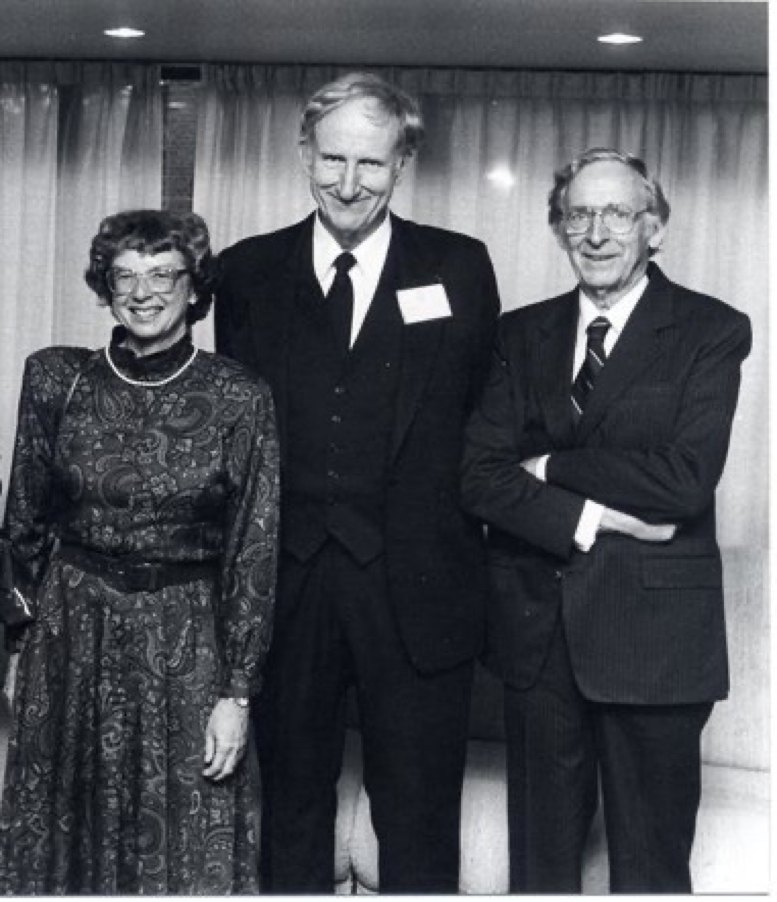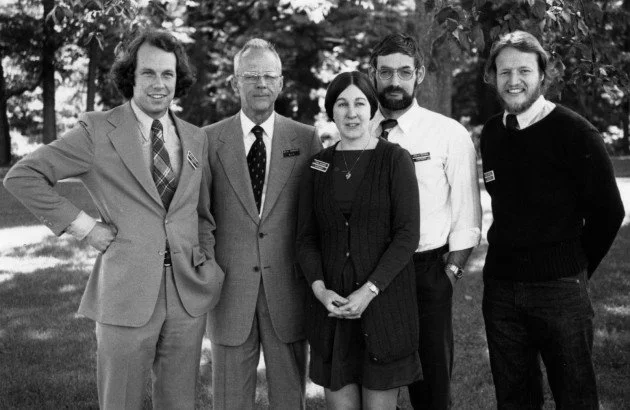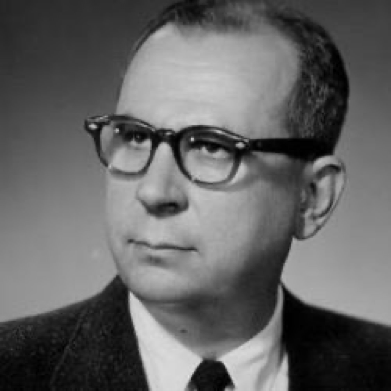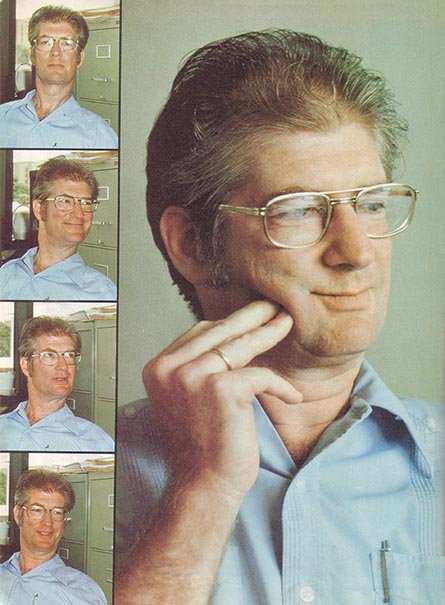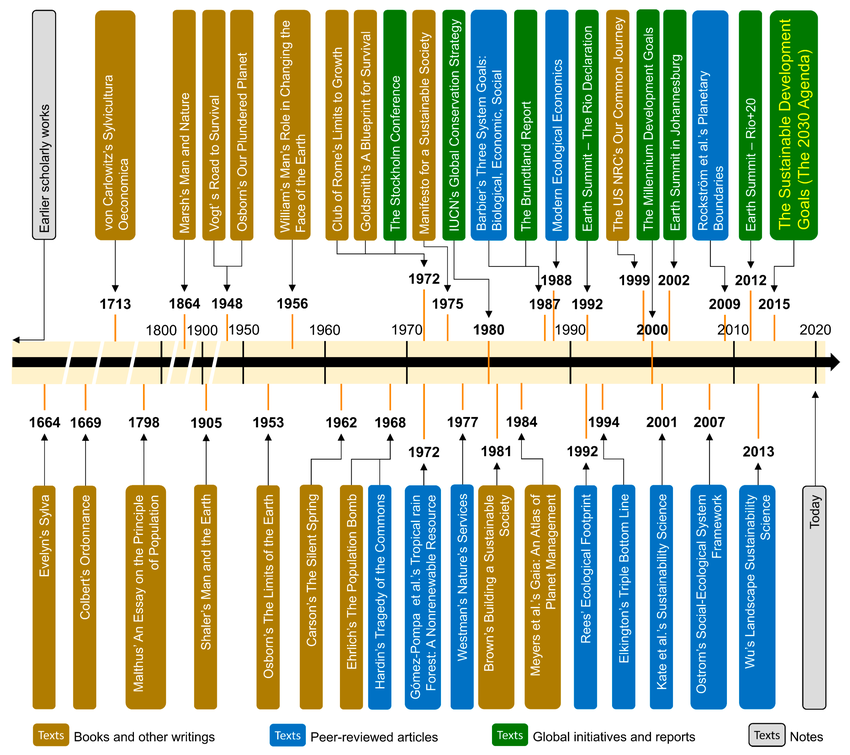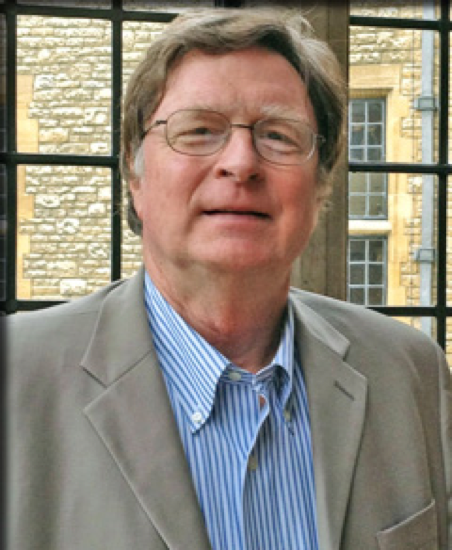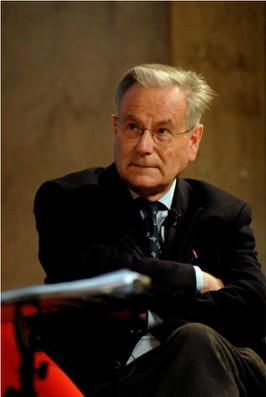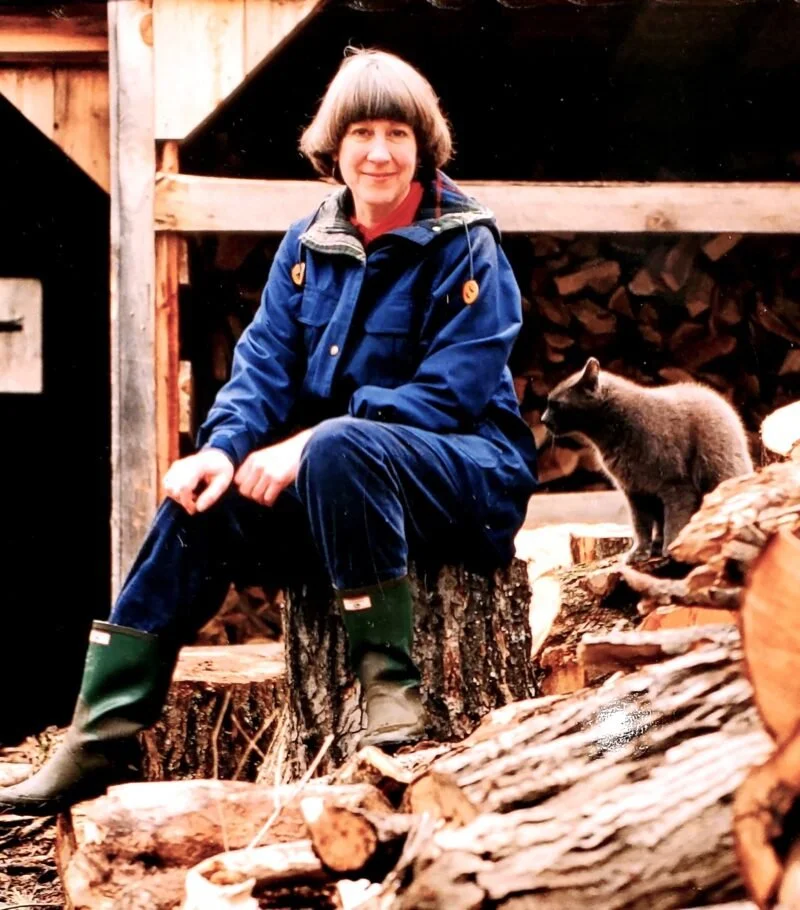
History of Ecological Economics
The Historical Roots of Ecological Economics
Ecological economics (EE) is rooted in the diverse disciplines, life and times of a number of quite varied social and natural scientists and philosophers. The evolution of EE begins in the 18th century with the physiocrats' focus on the land as the source of wealth, and the discovery of the laws of thermodynamics in the 19th century that helped to reconcile biology and physics. It got a large boost with the economic and oil crises of the 20th century, and continues to focus on transitioning to less carbon intensive socio-economic systems.
The Political Economic Roots of Ecological Economics (18th and 19th Centuries)
The Physiocrats (1700’s)
Beginning with the transition from mercantilism to classical economics, a French school of economics called physiocracy or ‘rule by nature’ briefly flourished. Quesnay (1758), Mirabeau (1763), and Dupont de Nemours (1767) developed the Tableau Economique (later adopted in neoclassical economics for general equilibrium and multisectoral input-output systems (Leontief, 1941; Meek, 1963)), and the conceptualization that the wealth of nations came directly from the surplus of the land. They theorized that the economy was driven by a Natural Law, composed of physical (describes what is) and moral laws (describes what ought to be for societies to function in line with the rest of nature), that transcended human free will (Quesnay, 1765).
Physical Laws (lois physiques)
These were the universal principles governing the natural world, independent of human will.
They included the fertility of land, the biological cycles of growth, and the fact that agriculture produces a net product (produit net) beyond subsistence.
They were “laws of necessity”: fixed, unchangeable, operating whether humans recognized them or not.
Moral Laws (lois morales)
These were the rules of conduct for humans living in society, aligned with reason and justice.
They expressed how people ought to behave in order to live harmoniously with the physical laws.
This included respect for property rights (especially land), contracts, liberty of labor and exchange, and justice administered by the sovereign.
Unlike physical laws, these required human recognition and enforcement; they could be violated, but at the cost of disorder and misery.
Adam Smith (1776) himself stated that “…with all its imperfections, [the Physiocratic system] is perhaps the nearest approximation to the truth that has yet been published upon the subject of political economy, and is upon that account well worth the consideration of every [human] who wishes to examine with attention the principles of that very important science.”
Classical Economists Who Grounded Their Thinking in Biophysical and Moral Foundations
The Classical Political Economists (1776–1867) grounded their economic thinking in biophysical foundations (land, labor, and productive capacity) and moral philosophy (distribution, justice, and welfare). Their frameworks reflected limits posed by land scarcity, population pressure, and the ethical dimensions of economic organization.
However, they did not yet understand energy or the laws of thermodynamics, which were only formalized later in the 19th century (Carnot 1824, Clausius 1865). This means their economics engaged with material constraints and moral concerns, but not with the energy basis of production that would become central to ecological economics amid the age of fossil fuels in the 20th century.
Adam Smith (1776) – An Inquiry into the Nature and Causes of the Wealth of Nations
Land, labor, and capital as the “three factors of production.”
Early moral-philosophical grounding (linked to his Theory of Moral Sentiments, 1759).
Saw wealth as embedded in productive capacity, not pure monetary abstraction.
Thomas Robert Malthus (1798) – An Essay on the Principle of Population
Limits to growth through population–resource dynamics.
David Ricardo (1817) – On the Principles of Political Economy and Taxation
Theory of land rent, diminishing returns.
Grounded in the scarcity of land and resource limits.
Charles Babbage (1832) – On the Economy of Machinery and Manufactures
Analysis of machinery, division of labor, and industrial organization.
Early recognition of energy and material aspects of production.
John Stuart Mill (1848) – Principles of Political Economy
Advocated a stationary state economy — another early acknowledgment of limits to growth.
Blended economics with ethics and justice.
Karl Marx (1867) – Capital: Volume I
Labor theory of value, focus on exploitation of labor and resources.
Introduced the concept of the “metabolic rift” (separation of humans from natural cycles).
The Marginalist Revolution (1870s-1880s): The Rise of Neoclassical Economics and the Shift Away From Biophysical and Moral Foundations
The Marginalist Revolution marked a paradigm shift away from the biophysical and moral foundations of classical economics to abstracted mathematical models of marginal utility, equilibrium, and subjective value theory. Jevons can be considered a bridge figure from classical biophysical foundations to the neoclassical abstractions of subjective value and marginal utility.
Main Proponents (the “Marginalist Triad”):
William Stanley Jevons (1871) – The Theory of Political Economy
Introduced marginal utility as the basis of value (subjective psychology, not land/labor).
Interestingly, before leading the marginalist revolution, Jevons (1865, The Coal Question) showed a strong biophysical awareness, warning that Britain’s prosperity was bound to the finite supply of coal. He also formulated what later became known as the Jevons Paradox in ecological economics—the observation that improvements in the efficiency of coal use, such as through steam engines, did not save resources but instead accelerated overall consumption. Yet, despite these ecological insights, Jevons later turned toward the abstract, psychological foundations of marginal utility, marking the broader neoclassical break from biophysical and moral concerns—a shift that ecological economics would later attempt to recover.
Carl Menger (1871) – Principles of Economics
Founder of the Austrian School; subjective value, methodological individualism.
Léon Walras (1874–77) – Éléments d’économie politique pure (Elements of Pure Economics)
Formalized general equilibrium theory, abstracting away from physical resources.
Other Key Contributors to the development of Neoclassical (Welfare) Economics (late 19th Century and Early 20th Century)
Alfred Marshall (1890) – Principles of Economics
Consolidated marginalism into mainstream economics, creating the neoclassical synthesis.
Vilfredo Pareto (906) – Manual of Political Economy
Refined utility analysis; efficiency concepts (Pareto optimality).
Arthur Cecil Pigou (1920) - The Economics of Welfare
His landmark work The Economics of Welfare (1920) developed welfare economics and formalized the idea of externalities (Pigovian taxes).
He built directly on Marshall’s framework, since he was Marshall’s student and successor at Cambridge.
This timeline shows some of the major turning points in the evolution of how economics has conceptualized the role of its biophysical foundation and its embeddedness to the rest of nature for that matter. Source: Gómez-Baggethun et al., 2010.
The Discovery of Thermodynamics (1800’s): The Physical Roots of the Biophysical Foundation
The physiocrats' natural philosophy could not be developed further until the laws of thermodynamics and the meaning of energy (ability or capacity to do work), more generally, were discovered in the 19th century. Scientific curiosity led 28-year-old Sadi Carnot (1824) to stumble upon thermodynamics when he encountered an efficiency limit that steam engines could not exceed. His work on heat and energy transformations was an imperative for the bourgeoning industrial economy, and laid the foundation for Rudolf Clausius (1851, 1867) who, with the help of Lord Kelvin, formulated the first law of thermodynamics (which states that the total quantity of energy is conserved), and to develop the concept of entropy which allowed him to formalize the second law of thermodynamics (which states that the total quality of energy is not conserved).
The discovery of the laws of thermodynamics provided the scientific foundation to reconcile biology and physics, and provided natural and social scientists with a biophysical framework to observe and study the role of available energy flows in the coevolution of socio-economic systems. The following are some interesting applications of this framework at the turn of the 19th century.
Herbert Spencer (1880) was an evolutionary biologist who realized that humans had evolved to deal with the tendency for increasing entropy by investing energy derived from nature to maintain their socio-economic systems. Sergei Podolinsky (1883) was a Ukrainian physician turned economist who, after analyzing the thermodynamics of the economy and the labor theory of value, concluded that the scientific socialism of Frederick Engels was problematic because it relied on unlimited material expansion (which is the same sustainability problem of capitalism). It is important to note that Podolinsky’s early analysis trying to understand the relationship of the labor theory of value with thermodynamics was novel, ahead of his time, and in some ways flawed. Engels thought Podolinsky was forcing physics into economics in a way that didn’t make sense scientifically (especially his claim that labor could “store” energy indefinitely, which Engels pointed out that this violated the second law of thermodynamics). It is argued that instead of developing an ecological critique, Engels doubled down on the view that socialism was about reorganizing production, not about natural limits. This may partly reflect the context of the time: Marx and Engels were writing at the dawn of the fossil fuel age, when coal seemed abundant and the finite nature of such resources was not yet apparent or relevant to political economy. Today, however, we recognize that it is not an either/or. Both the reorganization of production and the recognition of natural limits are essential for sustainability. Nevertheless, Podolinsky’s early attempt (however flawed and limited) anticipated the use of concepts of energy flows and surplus would later become the backbone of biophysical and ecological economics (Martinez-Alier and Naredo, 1982). Lastly, Wilhelm Ostwald (1907, 1911) was a German chemist, who believed that thermodynamics should be the foundation to all sciences, and applied his understanding of energy to explain that human history was marked by energy transformations.
The Biophysical Economic Roots (First Half of 1900’s): Early Emergence of Ecological Economics
Amid the shift away from biophysical foundations in neoclassical economics, the 20th century saw an insurrection of biophysical thought grounded in thermodynamics led by creative thinkers in the natural and social sciences who had the audacity to get out of their disciplinary boxes to question conventional thinking.
The mathematical biologist Alfred Lotka (1922) described evolution as a race between energy transformers whose existence relied on capturing available energy in the most efficient way possible for the preservation of the species. In Elements of Physical Biology, Lotka (1925), introduces the term ‘biophysics’ (later adopted in biophysical economics), and the theories he lays out there (including “maximum power”) would become instrumental in the development of ecosystem science and energetics that system ecologists would apply decades later to natural and social systems.
Energy, Thermodynamics, and the Financial System
Frederick Soddy, a Nobel laureate in chemistry, theorized that wealth creation was ultimately biophysical in nature, and, thus, “the principles and ethics of all human conventions must not run counter to those of thermodynamics” (Soddy 1922, p.9). Consequently, this led Soddy (1926, 1933) to publish Wealth, Virtual Wealth and Debt, where he concluded that the Achilles heel of economics was its disregard for the thermodynamics of real wealth. Instead the financial sector relies on mathematical laws (e.g. compound interest) to create ‘virtual’ wealth derived from debt that lacks a physical dimension. Furthermore, Soddy realized the ‘flamboyant’ pre-depression era of the 1920s was made possible by an energy transition that replaced humans' reliance on “energy revenue” (solar energy) with high concentrations of “energy capital” (fossil fuels), which could not last forever (for more on Soddy's economic thought see Daly, 1986).
Another prominent foundation of biophysical thinking is the work of Leslie A. White, an unconventional anthropologist who believed that the evolution of human culture was inextricably linked to energy. Writing during WWII, White (1943) described civilization as a form or organization of energy, and believed that culture, being a kind of behavior, could be treated as a manifestation of energy use. This led White to propose the law of cultural evolution (White's law) stating that “culture develops when the amount of energy harnessed by man per capita per year is increased; or as the efficiency of the technological means of putting this energy to work is increased; or, as both factors are simultaneously increased” (1943, p. 338). White (1949, 1959) believed that culture was composed of three subsystems (technological, sociological and ideological), and of these the technological system played the primary role as it allowed humans to harness energy and adapt to different environments.
Cottrell (1955, 1972), a railroad man turned sociologist, was also interested in the relationship between energy and human systems. Cottrell's (1955) approach in Energy and Society was both descriptive and comprehensive in explaining the processes that humans embarked on to exploit the energy available in nature. Cottrell theorized that energy quality and energy surplus were important factors as both influenced how much work could be done by socio-economic systems through subsidizing the productivity of labor and the discovery and development of more energy. Cottrell (1955) concluded that societies preferred energy resources and technologies that would generate the most energy surplus, and that the economic development depended on the continuous flow of energy surplus.
Resource Depletion
Next in line is King Hubbert (1949), a geologist who immersed himself in the collection of empirical data for the biophysical analysis of mostly nonrenewable energy. He developed the pioneering ‘Hubbert Curves’ predicting the future availability of fossil fuels (e.g. 1971, 1980). Hubbert (1956) initiated the discussion on peak oil by forecasting a peak of domestic oil production for the lower-48 states in 1970. While a peak did in fact occur in 1970, and production dropped essentially every year until 2007, this oil production was surpassed in 2018 due to new technologies such as hydro-fracking that can exploit diffuse petroleum deposits. Fracked oil too inevitably will encounter a production peak (Hughes, 2013; Heinberg, 2014). Hubbert's (1972, 1974) and Eugene Ayres' (1949, 1956) work added empirical biophysical analysis that showed clearly the ephemeral nature of the age of fossil energy, and how its discovery, production, consumption and eventual depletion were too essential for economics to continue to ignore.
The Rise of Systems Ecology, Limits to Growth, and Bioeconomics Amid Oil-Economic Crises (1950s-1970s)
These biophysical critiques of economic growth came to a head during the embrace of systems thinking and energy flow models in ecology (1950s-1970s), the birth of the U.S. environmental movement in 1960s and early 1970s amidst growing concerns about the inability of neoclassical economics to take seriously its biophysical embeddedness (Boulding, 1966; Daly, 1968; Ayres and Kneese, 1969). Other important publications of that time included high profile publications on population growth (Ehrlich, 1968; Ehrlich and Holdren, 1971) and limits to growth (Meadows et al., 1972).
The oil and economic crises of the 1970s and the rise of nuclear energy led a new wave of natural and social scientists to advance theories about the biophysical foundation of the economy that they thought were necessary to address environmental problems (e.g. Odum, 1971; Pimentel et al., 1973; Cook, 1976; Ayres, 1978). These years proved foundational to the development of ecological economics as a transdisciplinary alternative to the economic sub-disciplines of natural resource and environmental economics (Erickson, 1999).
The Economics of the Coming Spaceship Earth
Kenneth Boulding was a foundational thinker in what later became ecological economics, particularly through his systems-oriented approach that bridged economics, ecology, peace studies, and moral philosophy. His famous 1966 essay “The Economics of the Coming Spaceship Earth” introduced the metaphor of Earth as a closed, finite system (a “spaceship”) and contrasted it with a “cowboy economy” model of unbounded resources. In this essay, Boulding emphasized knowledge as a unique and crucial resource within the closed system of the Earth. Unlike every and material resources, which are finite and subject to depletion, knowledge is cumulative and potentially limitless. He argued that the “ultimate resource” for human survival and prosperity was not physical capital or natural resources, but the expansion and wise application of knowledge.
For Boulding, the challenge of the “spaceship Earth” economy was to channel this growth of knowledge toward maintaining ecological balance, rather than reinforcing the destructive, expansionist tendencies of the “cowboy economy. Boulding’s insights helped shift economic thinking toward recognizing ecological limits, recycling, sustainability, and the necessity of integrating natural systems into economic theory. Across his many works, he developed ideas around evolutionary economics, general systems theory, and social dynamics that have become central to ecological economics.
Boulding also played significant public and institutional roles. He served as President of the American Economic Association in 1968–69. He questioned standard economic assumptions, especially the plausibility of perpetual growth in a finite world. In 1993, Boulding provided testimony to the U.S. Congress in the wake of the Limits to Growth report where he stated that “Anyone who believes in indefinite growth on anything physical, or a physically finite planet, is either a madman or an economist.”
In recognition of his influence, the International Society for Ecological Economics created the Kenneth Boulding Memorial Award for Ecological Economics (often called the Boulding Award) to honor individuals who exemplify Boulding’s integration of ecological, economic, and moral dimensions in scholarship.
Systems Ecology
Systems ecologists also contributed to the biophysical foundations, including most prominently the work of the Odum brothers on ecosystem science and energetics. The roots of ecological economics can be traced back to the development and popularization of ecosystems as the fundamental unit of study in ecology by Eugene Odum (the father of modern ecology) in his magnum opus Fundamentals of Ecology (1953), with contributions from his brother Howard T. Odum on ecosystem energetics.
In his seminal work, Environment, Power and Society, Howard T. Odum (1971, 2007) applied his systems ecology background on energy flows in nature to analyze the interrelatedness of social and natural systems. Odum built on the work of Lotka to develop the maximum power principle to theorize that biological and cultural evolution could be explained by the tradeoffs of rate and efficiency in which ecosystems and economies obtained and converted energy. Ultimately, for Odum (1977), all economic value could be traced back to an energy resource in accordance to the laws of thermodynamics. From this understanding, Odum develop emergy or “energy memory” method to account for the total amount of available energy of one type (usually solar) that is directly and indirectly required to create a product or service. In 1996, Odum published Environmental Accounting: Emergy and Environmental Decision Making.
Meanwhile, Elisabeth Odum collaborated extensively with her husband Howard Odum to amplify his complex theories to wider audiences and co-authored with him books such as Energy Basis for Man and Nature (1976) and H.T Odum’s last book A Prosperous Way Down: Principles and Policies (2001). Her background in education likely informed her ability to communicate complex scientific ideas clearly in their joint works. After Howard's death in 2002, Elisabeth was instrumental in establishing the International Society for the Advancement of Emergy Research (ISAER), or "Emergy Society," in 2007. The organization continues to advance Odum’s research on emergy and transformity, key concepts in ecological economics.
In 1987, the Odums received the Crawford Prize (honors fields of science (e.g. bioscience, ecology) not included in the list left by Alfred Nobel, and its administered by the Swedish Royal Academy and the Crawford Foundation in Lund) for Bioscience for their pioneering contributions to ecosystem ecology. These contributions included defining the concept of the ecosystem as a fundamental unit of study in nature, emphasizing energy flows and system dynamics, and promoting the idea that ecological processes operate at multiple levels. Their groundbreaking work helped elevate ecology to a comprehensive, integrative science and significantly influenced the development of environmental policy and public understanding of ecological problems.
Today, the Odum’s legacy continues with Centers named after H.T. Odum at the University of Florida and the Odum School of Ecology at the University of Georgia.
(Picture names from left to right: Elisabeth Odum, Howard Odum, and Eugene Odum at the Swedish Crawford Prize Ceremony in 1987.)
Limits to Growth (1972)
Under the guidance of Jay Forrester (the father of systems dynamics) and the auspices of the Club of Rome, Donella Meadows, Dennis Meadows, Jørgen Randers, and William Behrens III used some of first computers at the Massachusetts Institute of Technology to develop the Limits to Growth world 3 model, which would reinforce the biophysical foundations of the emerging field of ecological economics. Their application of systems dynamics to understand the relationship over time among the 5 main variables of resources, food production, industrial output, population and pollution resulted in 3 main conclusions:
If current growth trends in population, industrialization, pollution, food production, and resource depletion continue unchanged, the limits to growth on this planet will be reached within the next hundred years.
It is possible to alter these growth trends and establish a condition of ecological and economic stability that is sustainable far into the future.
If the necessary changes are made sooner rather than later, humanity can achieve a sustainable future. But the later the changes are made, the narrower the options become.
(Picture names from left to right: Jørgen Randers, Jay Forrester, Donella Meadows, Dennis Meadows, and Behrens).
Check out the recent podcast: Tipping Points: The True Story of the Limits to Growth.
Emerging Early Ecological Economic Theories Rooted in Biophysical Economics (1970s)
Bioeconomics
Nicolas Georgescu-Roegen and his student Herman Daly are considered two of the most influential economists in the development of both biophysical and ecological economics for their work on developing comprehensive understandings of the thermodynamic foundation of economics. In The Entropy Law and the Economic Process (1971), Georgescu-Roegen provides a robust biophysical critique of neoclassical economics by asserting that the economic process is in essence about a qualitative change in energy and matter dictated by the laws of thermodynamics, which states that useful energy is continuously and irreversibly degraded into less useful, dissipated energy. This contrasts with the mechanical, circular model of production assumed by neoclassical economics. In line with the entropy law, he concluded that all economic activities—from the extraction of resources to the creation of waste—are fundamentally irreversible. This means the planet's stock of available, low-entropy resources is continuously depleted. In developing bioeconomics, Georgescu-Roegen believed that the most significant output of the economic process was human well-being. He proposed a "minimal bioeconomic program" that includes principles like reducing consumption and advocating for a path of degrowth, particularly in developed nations, to manage finite resources.
From his perspective, economies needed to be structured not to grow for growths sake but to provide well-being by managing sustainably the rates at which we use and transform energy and materials. To better represent the entropic nature of production, Georgescu-Roegen developed a "flow-fund" model. The key distinction is that "funds" (like capital equipment or the labor force) are factors that enable production but are not physically used up in the process, while "flows" (like energy and raw materials) are transformed into waste (although materials can be recycle to some extent).
Drawing from biologist Alfred Lotka, Georgescu-Roegen incorporated the concept of "exosomatic evolution," the idea that humans extend their biological functions through technology. He argued that this dependence on manufactured tools and the high-density fossil energy sources to power them places severe ecological limits on humanity.
Steady-State Economy
Herman Daly was an early pioneer who anticipated ecological economics with his 1968 article “On Economic as a Life Science”. He also took Georgescu-Roegen's biophysical critique of neoclassical economics to another level by developing Steady-State Economics (1977), building on John Stuart Mill, as an alternative model that could bring the throughput of the economy within levels that the biophysical world could sustain.
In 1980s, Daly continued to publish articles and books criticizing mainstream economics lack of biophysical and ethical foundations. He was a co-founder of the International Society for Ecological Economics in 1989. From 1988-1994, Daly worked at the World Bank where he advocated for limits to growth and the overreliance on GDP as a guide for development. In 1989, Daly published For the Common Good, where he and Cobb presented an alternative measure to GDP called the Index of Sustainable Economic Welfare. Throughout the rest of his career, Daly attempted to ground sustainable development in biophysical realities and ethical considerations by calling for a shift from quantitative growth to qualitative improvement.
Today, many of his ideas have influenced many thinkers, including most recently Kate Raworth’s Doughnut Economics, while his ideas continue to gain prominence in many spaces as the realities of planetray boundaries and limitations of mainstream economics become more evident.
Modern Emergence and Institutionalization of Ecological Economics (1980s-2000s):
Ecological Economics (starting with Boulding, 1966) explicitly arose to reconnect economics with its biophysical and moral foundations lost in the marginalist turn. The field differentiated itself from other heterodox approaches by developing a biophysically grounded paradigm shift, accompanied by ethical considerations, to design a new political economy that could bring our socio-economic systems within a sustainable path. Ecological economics became more transdisciplinary over time, taking on the mantle to become the science and management of sustainability (Costanza, 1991). The timeline below shows the position of ecological economics (starting with its official institutionalization in 1989) in the evolution of sustainability and sustainable development alongside related works that have influenced the development of the field or have been influenced by the field after its modern establishment.
Timeline showing how the sustainability concept has been advanced by scholarly works and global policy initiatives amid the rise of modern ecological economics. Source: Estoque, 2020.
Odum's students Robert Costanza (also a student of Daly), John Day, Charles Hall, and others built on his theories to further the understanding of the biophysical foundation of economies. For example, Costanza (1980, 1981; Costanza and Herendeen, 1984), analyzed the relationship between energy and the dollar value of goods and services of the U.S. economy to develop the embodied energy theory of economic value, arguing that the value of any good or service can be traced back to the quantity of energy directly and indirectly used in its production. Costanza also played a critical role in developing the theory and practice of ecological economics, and more controversially, in promoting the valuation of ecosystem services for which he would become known in EE (Costanza et al., 1997, 2014).
Costanza is co-founder and past-president of the International Society for Ecological Economics, and founding editor of the society’s journal, Ecological Economics. Costanza has been a prolific academic writer, which has helped to spread many of the ideas of ecological economics among academic and even policy circles. He is founding editor-in-chief of Solutions a unique hybrid academic/popular journal and editor in chief of The Anthropocene Review. Currently, Dr. Robert Costanza is a professor of Ecological Economics at the Institute for Global Prosperity, UCL.
Wallenberg Symposium on Integration of Economics and Ecology
Ann-Mari Jansson, a student of H.T. Odum, is considered a pioneering figure in ecological economics for her systems ecology research in Sweden and for fostering the interdisciplinary dialogue among ecologists and economists that became foundational to the field. Jansson believed deeply in transdisciplinary cooperation between natural and social scientists to solve complex environmental problems.
In 1982, Jansson organized the Wallenberg's symposium in Sweden on integrating economy and ecology drawing largely from a biophysical foundation. In 1984, she was the editor of Integration of Economics and Ecology: An Outlook for the Eighties, which was one of the first attempts at bridging ecology and economic and included a variety of articles from participants of the Wallenberg symposium by Odum, Daly, Hall, Costanza, among many others. In 1989, she helped establish the International Society for Ecological Economics and became an editor of the journal Ecological Economics published the same year.
Jansson was also instrumental in the publication of an early ecological economics synthesis book titled Investing in Natural Capital: The Ecological Economics Approach to Sustainability. This book provided a critique of conventional economics' narrow focus on manufactured capital, proposing policy and financing solutions to ensure that investments in natural systems lead to long-term well-being and resilient social-ecological systems.
In 1996, Jansson received many awards but the one that meant the most to her was ISEE’s highest award, the Kenneth Boulding Prize for Outstanding Contributions in Ecological Economics.
Net Energy Analysis
Systems ecologist Charles Hall, like his mentor Odum, also turned his attention to economics, which he found to be inconsistent with the basic natural sciences (e.g. Cleveland et al., 1984; Hall et al., 2001). From earlier analyses of net energy by Cottrell, Odum and others, Hall (1972) explicitly coined the term energy return on energy invested (EROEI or EROI) concept while studying the energy cost and gains of migrating fish. The EROI concept would become instrumental in early BPE analyses of fossil fuels (Hall et al., 1979; Hall and Cleveland, 1981; Hall et al., 1981; Cleveland et al., 1984). Hall worked with his students Cleveland and Kaufmann, to develop the influential Energy and Resource Quality: The Ecology of the Economic Process (Hall et al., 1986). This early BPE book built on the work of many of the aforementioned thinkers to comprehensively integrate and apply fundamental concepts of energy and thermodynamics to the economic process, and was a precursor to the most recent compilation in Energy and the Wealth of Nations: An Introduction to Biophysical Economics (Hall and Klitgaard, 2018).
In 2022, Hall co-founded the Biophysical Economics Institute where his ideas about energy and the economy are being put into practice.
Barcelona Meeting (1987) Institutionalizes Ecological Economics
Joan Martinez-Alier is a pioneer of ecological economics. In 1987, he argued for the biophysical foundations to socio-economic processes in Ecological Economics: Energy, Environment and Society, including an overview of the history of biophysical economic thought from 1865 to 1940. He argued that economics cannot be studied without understanding the energy flows that power the economy.
In 1987, Martinez-Alier hosted a conference in Barcelona that would result in the establishment of the field of EE in 1989 with establishment of the Internationla Society for Ecological Economics and the publication of its journal.
His later work has focused on issues related to degrowth in the global north and environmental justice in the global south. in 2012, this led him and his students to co-found the Atlas of Envrionmental Justice.
Contemporary Expansions of Ecological Economics (Late 20th Century and Early 21st Century)
Donella (Dana) Meadows is considered the mother of systems thinking and one of the most prominent and inspirational sustainability scientists/advocates of the 20th century. Her pioneering work on system dynamics modeling (Limits to Growth and subsequent updates) and systems thinking serve as some of the most important methodological foundations for studying and designing ecological economies. Meadows’ Thinking in Systems: A Primer (2008) was published posthumously and continues to serve as a guide on how to apply her ideas.
Dana went on to dedicate her life to develop a variety of systems thinking tools including her famous leverage points, which continue to be essential to understand and promote sustainable systems. Dana knew that the academic system had its limitations and decided to give up tenure at Dartmouth (while continuing to teach in the env. studies program) to dedicate herself to write her syndicated weekly columns for more than 20 newspapers around the U.S. called Global Citizen (from 1986 until her untimely death in 2001), and to work on other projects aimed at warning humanity of its predicament.
Today, the Donella Meadows Project of the Academy for Systems Change (formerly Sustainability Institute funded by Dana) maintains all of her archives and supports initiatives that promote and make use of Dana’s legacy.
Elinor Ostrom has been an influential figure within ecological economics for her work on Governing the Commons (1990) focused on challenging the mainstream solutions to the “tragedy of the commons”, and for deriving the eight design principles to manage common-pool resources sustainably based on her experience working with local communities around the world. Elinor built on her transdisciplinary work to co-develop the Social-Ecological Systems (SES) framework, which analyzes the interactions between ecological systems and human governance systems. This framework is now central to ecological economics, sustainability science and resilience thinking.
In 2009, Ostrom became the first woman to win the Nobel Prize in Economic Sciences for her work emphasizing how local institutions and cooperation can effectively govern resources without the need for top-down control or privatization.
Inge Røpke is a prominent scholar in ecological economics, especially known for her work tracing the history and conceptual foundations of the field, and for contributions to current debates about how to enable sustainable transitions. In her 2004 paper “The Early History of Modern Ecological Economics”, she combines literature review and interviews to show how ecological economics emerged from the environmental agenda of the 1960s, through interactions between ecologists, economists, and policy actors. She followed this with “Trends in the Development of Ecological Economics from the Late 1980s to the Early 2000s” (2005), which analyses how the field matured: identifying cognitive and social dimensions of how it grew, the roles of different research programmes, and organizational structures and controversies that shaped its evolution.
Beyond historical studies, Røpke has more recently written on sustainability transitions, especially the role of financial institutions and how economics education itself (e.g. what is taught in “Econ 101”) needs to change in order to support ecological sustainability.
For her longstanding contributions, Røpke was awarded the Kenneth Boulding Prize in 2018 by the International Society for Ecological Economics. The award recognized both her historical scholarship—especially her work on the history of ecological economics published in Ecological Economics—and her more recent research on planning sustainable transitions, including the important but under‐examined role of financial and banking systems.
Post-Institutionalization Syntheses of Ecological Economics
Robert Costanza. ed. (1991) Ecological Economics: The Science and Management of Sustainability.
Ann Jansson, A., Hammer, M., Folke, C. and Costanza, R. eds. (1994) - Investing in Natural Capital: The Ecological Economics Approach to Sustainability.
Robert Costanza, Cumberland, J.H., Daly, H., Goodland, R. and Norgaard, R.B. (1997) - An Introduction to Ecological Economics.
Herman Daly, and Joshua Farley (2011) - Ecological Economics: Principles and Applications.
Robert Costanza, Jon D. Erickson, Joshua Farley, and Kubiszewski, I. eds. (2020) - Sustainable Wellbeing Futures: A Research and Action Agenda for Ecological economics. You can access the introduction here.
Villamayor-Tomas, S. and Muradian, R. eds. (2023) - Barcelona School of Ecological Economics and Political Ecology.
Rosa, E.P. and Ramos-Martín, J. eds. (2023) - Elgar Encyclopedia of Ecological Economics.
Clive L. Spash. (2024) - Foundations of Social Ecological Economics: The Fight for Revolutionary Change in Economic Thought.
Social-Ecological Systems & Resilience
Mathis Wackernagel & William E. Rees (1998) - Our Ecological Footprint: Reducing Human Impact on the Earth.
Gunderson L.H. & C.S. Holling (2002) – Panarchy: Understanding Transformations in Human and Natural Systems
Ecological Economics & Sustainable Development
Phillip Lawn (2000) - Toward Sustainable Development: An Ecological Economics Approach.
Herman Daly (2007) - Ecological Economics and Sustainable Development.
Earth System Science: Planetary Boundaries
Johan Rockström et al. (2009) – Planetary Boundaries: Exploring the Safe Operating Space for Humanity
Revisiting the Biophysical Foundations of Economics
Brian Czech (2013) Supply shock: economic growth at the crossroads and the steady state solution.
Charles A.S. Hall & Kent A. Klitgaard (2018) – Energy and the Wealth of Nations: An Introduction to Biophysical Economics.
New Political Economy Paradigms Grounded in Post-Growth Foundations
Some of the modern leaders in ecological economics and the post-growth umbrella.
Tim Jackson (2009) - Prosperity Without Growth: Economics for a Finite Planet.
Kallis, G., Kerschner, C. and Martinez-Alier, J. (2012) - The economics of degrowth.
D'Alisa, G., Demaria, F. and Kallis, G. eds. (2014) - Degrowth: A Vocabulary for a New Era.
Kate Raworth (2017) – Doughnut Economics: Seven Ways to Think Like a 21st-Century Economist.
Tim Jackson (2021) - Post Growth: Life After Capitalism.
Fioramonti, L., Coscieme, L., Costanza, R., Kubiszewski, I., Trebeck, K., Wallis, S., Roberts, D., Mortensen, L.F., Pickett, K.E., Wilkinson, R. and Ragnarsdottír, K.V. (2022) - Wellbeing economy: an effective paradigm to mainstream post-growth policies?
Jon D. Erickson (2022) - The Progress Illusion: Reclaiming our Future From The Fairytale of Economics.
Sandrine Dixson-Declève, Johan Rockström, Owen Gaffney, et al. (2022) – Earth for All: A Survival Guide for Humanity.
Robert Costanza (2022) - Addicted to Growth: Societal Therapy for a Sustainable Wellbeing Future.
Kallis, G., Hickel, J., O’Neill, D.W., Jackson, T., Victor, P.A., Raworth, K., Schor, J.B., Steinberger, J.K. and Ürge-Vorsatz, D. (2025) - Post-growth: the science of wellbeing within planetary boundaries.
Would you like to read more about the history of EE and the references cited?
